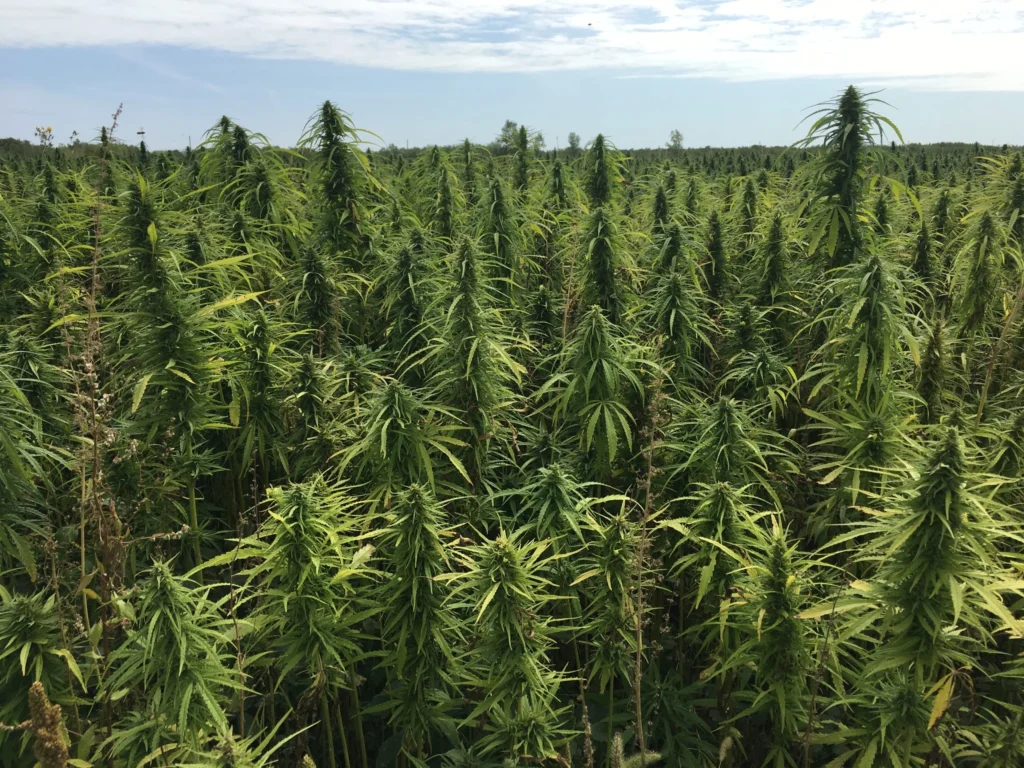In the quest to combat climate change, solutions often focus on transitioning from fossil fuels to renewable energy, improving farming practices, and restoring natural landscapes with carbon-absorbing plants.
While these are all critical steps, a smaller, less obvious solution might hold immense potential: hemp. This unassuming plant is one of the most eco-friendly resources on the planet and could play a significant role in addressing our growing climate emissions crisis.
Let’s explore how and why hemp could be a game-changer.
The Growing Climate Emissions Crisis
Climate change, global warming, and carbon emissions—these terms are frequently used interchangeably, but what do they really mean?
Climate change refers to shifts in global or regional climate patterns, primarily caused by human activities like burning fossil fuels (coal, oil, and natural gas). These activities release excessive amounts of carbon dioxide (CO2) into the atmosphere, creating an imbalance.
While CO2 is naturally released through processes like decomposition, the problem arises when more carbon is emitted than can be absorbed by forests, wetlands, and other natural carbon sinks.
The result? A continuous rise in global temperatures since the mid-20th century—a clear symptom of human-caused climate change.
It’s not just fossil fuels contributing to this crisis. Agriculture and farming account for one-third of greenhouse gas emissions, whether through fertilizer production, food storage, or farming techniques like tilling, which release nitrous oxide. To address this issue, we need to shift toward more sustainable resources—and hemp could be a key player.
Why Hemp is a Climate-Friendly Solution
Hemp is often referred to as nature’s purifier because of its remarkable ability to capture CO2 from the atmosphere and act as a carbon sink. During its growth, hemp sequesters carbon dioxide in the soil, effectively storing it throughout its lifecycle. Here’s why hemp stands out:
- High Carbon Absorption : Hemp absorbs four times more CO2 than trees. One acre of hemp can remove up to 10 tons of carbon from the air. In fact, just one hectare of hemp offsets the annual carbon emissions of two cars.
- Carbon-Negative Crop : Unlike many crops that contribute to emissions, hemp is carbon-negative—it absorbs more CO2 during growth than it emits. This makes it a powerful tool in reducing atmospheric carbon levels.
- Low Resource Requirements : Hemp requires significantly less water than other crops like cotton. For example, while cotton needs about 1,500 gallons of water per pound of product, hemp uses less than half that amount. Additionally, hemp produces 200-250% more fiber on the same land area, making it far more efficient.
- Fast Growth Without Pesticides : Hemp grows rapidly, reaching maturity in just four months. It doesn’t require pesticides, which are notorious for emitting large amounts of CO2 during production. This makes hemp ideal for sustainable farming systems and helps regenerate soil health.
Hemp’s Role in Soil Health
Agriculture is a leading cause of soil degradation, which affects fertility, organic content, and pH levels. Crops like cotton, wheat, palm oil, and soy often exacerbate soil erosion. Hemp, however, does the opposite.
- Deep Root System : Hemp’s extensive root system strengthens the soil, preventing erosion and improving its structure.
- No Need for Pesticides : Since hemp thrives without chemical inputs, it promotes healthier soil ecosystems, allowing farmers to grow a wider variety of crops.
- Land Reclamation : Hemp is classified as a pioneer plant, meaning it can grow in infertile or degraded soils. This makes it an excellent candidate for land reclamation projects, helping restore barren areas to productivity.
Hemp’s Versatility as a Sustainable Material
One of hemp’s greatest strengths lies in its versatility. From food and beverages to construction materials, hemp offers a wide range of applications:
- Food and CBD Products : Hemp seeds are nutritious and can be used in oils, snacks, and protein powders. Hemp-derived CBD products have also gained popularity for their health benefits.
- Textiles : Hemp fibers are durable and eco-friendly, making them ideal for clothing, bags, and other textiles.
- Construction Materials : Hempcrete, a mixture of hemp fibers and lime, is emerging as a sustainable alternative to traditional cement. Cement production accounts for approximately 5% of global carbon emissions due to the high heat and energy required. Hempcrete, on the other hand, is porous, insulating, fire-resistant, and decay-resistant. As Dr. Mike Lawrence of the University of Bath notes, “The hemp itself is porous, meaning the walls are well insulated, while the lime-based binder protects the hemp and absorbs even more CO2.”
This makes hemp an attractive option for zero-carbon buildings, aligning with global efforts to reduce emissions in the construction industry.
The Bigger Picture: How Hemp Fits Into Sustainability
While hemp alone cannot solve the climate crisis, it represents a powerful step forward. Its ability to absorb carbon, improve soil health, and provide sustainable alternatives to resource-intensive materials makes it an invaluable asset in the fight against climate change.
However, widespread adoption of hemp faces challenges. Public awareness and education about its benefits remain limited. By supporting hemp products—from food to construction materials—we can encourage farmers and industries to embrace this versatile crop. Every small action counts, and collective effort can lead to transformative change.
As the saying goes, “Nothing changes if nobody changes.” By planting hemp seeds today, we can sow the foundation for a greener, more sustainable tomorrow.


